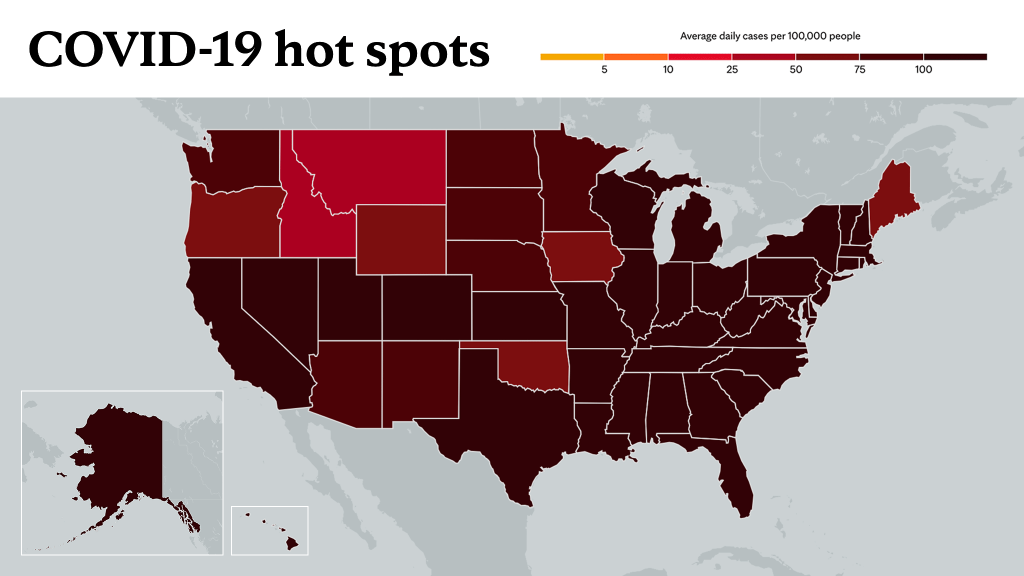-
What is ‘flurona’ and why a Mayo Clinic expert says flu cases are rising

Flu cases are starting to rise across parts of the U.S. And that's concerning because fewer people are vaccinated for flu, compared to last year, according to the Centers for Disease Control and Prevention (CDC).
With the COVID-19 omicron variant also spreading, Dr. Stephen McMullan, a Mayo Clinic family medicine physician, explains what a coinfection of the flu and COVID-19 dubbed "flurona" means.
Journalists: Broadcast-quality sound bites are in the downloads at the end of this post. Please courtesy: "Stephen McMullan, M.D./Family Medicine/Mayo Clinic."
"Coinfection is rare with COVID-19 and the flu, or COVID-19 and other types of infections that you might get as far as upper respiratory infections because COVID-19 tends to take over," says Dr. McMullan. "Once COVID-19 is in your body, it's going to be the predominant virus, but there are some rare cases where we have seen people getting both COVID-19 and the flu. So it is possible, but it's certainly not common."
Historic activity for areas with rising cases ― the eastern and central parts of the U.S. as of the first week of 2022 ― show flu typically peaks in late January and February. As to why flu is surging earlier, Dr. McMullan explains that several factors could be the cause.
"We're all a little bit more back together than we were a year ago," says Dr. McMullan. "The kids are back in school, and we have more events that people are attending, which could explain why we're seeing flu cases rise."
The CDC lists the dominant strain of flu this season as H3N2, which the current vaccine is formulated to protect against. However, nearly 20 million fewer doses have been given by the start of 2022, compared to one year earlier.
When it comes to recognizing symptoms, Dr. McMullan says COVID-19 and flu are similar. He recommends testing to determine the exact illness and appropriate course of action.
"Nasal congestion; coughing; maybe a sore throat; and difficulty breathing or catching your breath, especially with exertion, can be symptoms of the flu," says Dr. McMullan. "More commonly, what we see are fevers and body aches, specifically muscle aches may be more indicative of the flu itself, rather than other upper respiratory viruses or even COVID-19."
If you do contract the flu, Dr. McMullan recommends isolating from those in your household to prevent further spread, and he says that most people will be able to self-treat with symptomatic medications such as anti-inflammatory, cough suppressant and fever-reducing medications. For questions or if a case becomes severe, contact your health care provider.
Dr. McMullan says it's possible to stay safe from COVID-19 and flu.
"Get vaccinated against COVID-19, including your booster if eligible, and make sure to get your flu vaccine," says Dr. McMullan. "Continue to do the same strategies to protect yourself and others, such as wearing a mask in high-risk situations, washing your hands and staying home if you feel ill."
Those who are eligible can get vaccinated for flu and COVID-19 at the same time. It's also possible to get vaccinated for flu and receive a COVID-19 booster vaccination at the same time.
For the safety of its patients, staff and visitors, Mayo Clinic has strict masking policies in place. Anyone shown without a mask was either recorded prior to COVID-19 or recorded in a nonpatient care area where social distancing and other safety protocols were followed.
Information in this post was accurate at the time of its posting. Due to the fluid nature of the COVID-19 pandemic, scientific understanding, along with guidelines and recommendations, may have changed since the original publication date.
For more information and all your COVID-19 coverage, go to the Mayo Clinic News Network and mayoclinic.org.
Learn more about tracking COVID-19 and COVID-19 trends.








